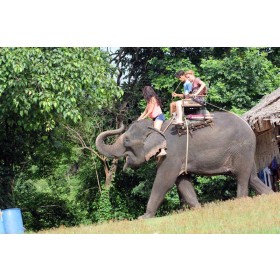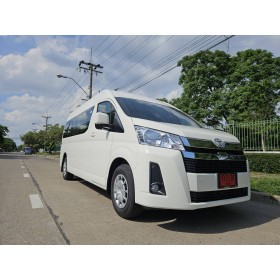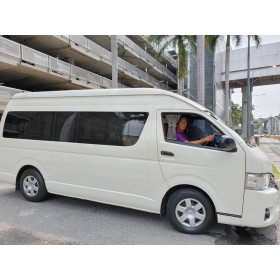Login Form
Registration
Profile Informations
Login Datas
or login
- Description
-
Details
KANCHANABURI DAY TRIP BY VIP VAN (Please inform us in advance if you want to take train on your trip)
For more information, please contact us on WhatsApp (+66) 99-129-5899
If you want to pay by credit card. Please kindly make payment via this link https://www.thaivanrent.com/st_car/kanchanaburi-day-trip-by-vip-van/
Kanchanaburi is the third biggest province in Thailand. The area is mostly mountains and hilly terrains. You can start the trip at early morning so if there is enough time you can also get the train (100 THB per person) from River Kwai Bridge to Sai Yok Noi Waterfall. A long the train route you will see beautiful view.
Kanchanaburi Tour Program (The private program can be adjusted based on customers desired)
07.00 am: Pick up at hotel in Bangkok and travelling to Kanchamaburi by visiting;
Kanchanaburi War Cemetery - This vast graveyard, midway between downtown Kanchanaburi and the famous bridge, is the final resting place for nearly 7,000 Allied P.O.W.s (mainly British and Australian) who died building the railroad. The graves are immaculately maintained by a dedicated team of gardeners under the auspices of the Commonwealth War Graves Commission in London. Simply reading the inscriptions on the tombstones brings a lump to the throat.
Death Railway Museum - The interesting place to start is the Death Railway Museum or Thailand-Burma Railway Centre, near Kanchanaburi War Cemetery, in Kanchanaburi. The Death Railway museum is informative of background knowledge and give an insight depicting history of Thai-Burma Railway beginning from Japanese arrival in Thailand, the design and construction of the Death Railway, the P.O.W.s, etc. This Death Railway museum is privately funded by Rod Beattie who is an expert in the history of the Death Railway. If you are interested in the Death Railway history, this Kanchanaburi sightseeing is highly recommended.
River Kwai Bridge - The Bridge on the River Kwai, also known as the Death Railway, is the simple girdered bridge at the north end of town. The chief attraction, and one of the most famous World War II memorials in Southeast Asia. You can take time to have lunch at the restaurant or have some refreshment and enjoy the beautiful view of the River Kwai Bridge with the river and mountain screen. Don’t leave without taking some photo and share your one in a life time experience on your social media.
Sai Yok Noi Waterfall - Sai Yok Noi Waterfall is popular sightseeing in Sai Nok National Park. At the park you will find peaceful stands of forest on the banks of the broad Khwae Noi River. Follow the signs from the information center to the nearby suspension bridge for admirable views of Sai Yok Noi waterfall tumbling down a limestone cliff into the river. It’s time for relaxation and enjoy cool and clear water for swimming with fish in the streams. The amount of water depends on the season: the hot season (March-May) will have less water but clear on waterfalls, the cool season (November-February) might have fog and cold weather, the rainy season (May-October) is the most impressive and the best time to visit because the forests are lush.
16.00 pm: Return to Bangkok Arrive and drop off at hotel.Included: Van rental, driver, petrol, toll way fee, parking fee and insurance
Excluded: Entrance fee and personal expense
Remark:
• You can use service at 12 hours per day maximum. The extra charge for over 12 hours is 200 thb per hour
• Travel by Toyota Commuter with 10 seat. (Suitable for 4-10 tourists)
• If you need Van with 13 Seater please Whatapp: +66-99-129-5899Things & Facts to know before travelling Kanchanaburi Trip in Thailand
This relaxed town to the west of Bangkok sits in a beautiful setting of forests and picturesque hills. It is best known for its connections with the notorious Thailand-Burma Railway—the Death Railway—built during World War II with forced Allied labor. Kanchanaburi is the site of a bridge over the River Khwae (Kwai), made famous by David Lean’s Oscar-winning film of 1957. More recently it became the focus of world attention when proposals for a massive dam threatened to destroy significant areas of wildlife habitat. After an environmental outcry, the project was scrapped.
There are many museums in Kanchanaburi where most tourists are confused and visiting to the wrong sightseeing. You can choose and compare each Kanchanaburi museum as followed:
• The Death Railway Museum or Thailand-Burma Railway Centre, closed to Kanchanaburi War Cemetery is highly recommended. If you have no background knowledge about the Death Railway and have a limited of time, we recommend tourists to visit Death Railway Museum where is small but very informative and walk to the Kanchanaburi war cemetery.
• Ban Kao National Museum is located on the bank of the Kwai Noi River, around 22 miles or 35 Kilometers west of Kanchanaburi city. You will see some ancient Neolithic stone age tribespeople and fragments of their lives—pottery and simple tools, discovered by the Dutch Allied P.O.W., Dr Van Hickderen, who was forced to build the Death Railway.
• JEATH War Museum is an excellent place to visit in Kanchanaburi. The title is an acronym formed from the names of some of the nations involved in the building of the railway: Japan, England, Australia/American, Thailand, and Holland. The museum is informal, with three bamboo huts revealing something of the feel of the original prison camps, Memorabilia displayed inside the huts includes paintings and drawings by the prisoners that graphically depict the horrors of camp life, and letters written by the P.O.W.s, telling of sacrifice and deprivation on the railroad and grisly tortures inflicted by the Japanese. JEATH War Museum may be modest in scale, but it is a moving and unforgettable memorial to the 12,000 Allied prisoners of the war and 100,000 Asian laborers who died here under such appalling conditions in the construction of the Thailand-Burma Railway.
• War Museum Kanchanaburi is located near The Bridge on the River Kwai or the Death Railway. The Museum is organized by private company where is collected the objects discovered after the war such as helicopter, aircrafts, train engine, paintings, old rifles, swords and porcelain. Most tourists have complain about the limited of information and not well organized but it is worth visiting if you are at the River Kwai Bridge.
Background history of the Death Railway
The Death Railway train still runs along the remains of the Thailand—Burma railway. Kanchanaburi’s chief attraction, and one of the most famous World War II memorials in Southeast Asia, is the simple girdered bridge at the north end of town. The original wooden bridge was part of a much more ambitious project, which gained notoriety at the center of one of the most terrible and tragic stories of the war.
The Japanese conceived a plan in fall 1942 to build a 255-mile (414 km) railroad across Thailand to Thanbyuzayat in Burma (now Myanmar). Allied operations around Singapore and in the Straits of Malacca has effectively blocked sea routes used by the Japanese between mainland Southeast Asia and points west, such as Burma and –the final goal—India. The Japanese had quickly conquered Burma at the beginning of the conflict and badly needed to provide suppliers to their bases and troops.
The construction time of the serpentine rail line, through jungle and over mountain passes, was initially estimated at five years, but this was overruled by the Japanese High command, who ordered that the link by completed in just 12 months (in fact, it took 16 months). Allied prisoners were brought in from Singapore, Hong Kong, and other British territories, while Asians were shipped in from all corners of the region under Japanese control. The forced labor was essential to the success of the scheme, and men were treated as expendable—the appalling treatment, working and living conditions, malnutrition, and tropical diseases such as malaria, cholera, and dysentery killed thousands of laborers. The cost in human lives across the most difficult sections was later dubbed “a life for every sleeper”—a dead man for every railroad tie.
The first bridge built by P.O.W.s over the River Khwae (Kwai) was a rickety affair of wood, replaced in 1943 by a stronger iron structure imported from Java, which remains today. The bridge was the regular target of United States B-24 bombers, which knocked out the central span in 1945. It was rebuilt after the war with Japanese cooperation as reparation. The railroad itself operated for just two years—today only the 47 mile (77 km) stretch between Kanchanburi and Nam Tok remains in regular use.
Most visitors’ views are colored by the famous Academy Award-winning movie (it won six awards) The Bridge on the River Kwai (1957), by English director David Lean (1908-1981). The epic film is based on a novel by French author Pierre Boulle (1912-1994) called La Pont de la riviere Kwai (The Bridge on the River Kwai) and takes a number of liberties in its retelling of history.
The central character of the movie—Colonel Nicholson, played so movingly by Alec Guinness (1914-2000) – never existed and was invented for the purposes of the story. The film also suggests that the Allied prisoners were responsible for the engineering of the bridge, but in fact it was highly trained Japanese engineers who designed the project.
The film hinges on Nicholson’s obsession with constructing a perfect bridge that will be a tribute to its builders, but in reality the prisoners sabotaged and delayed the project at every possible turn.
The film also weaves and imaginative story about an American maverick, played by William Holden (1918-1981), escaping from the P.O.W. camp and then making his way to Ceylon (Sri Lanka), before returning to Kanchanaburi to blow up the bridge. The true story is that no one escaped the Japanese internment camp at Kanchanaburi and lived to talk about it. Perhaps the most tragic aspect of the book and the film was not the liberal retelling of the saga, but the fact that neither medium made much mention of the tremendous loss of Asian lives during the construction of the railroad bridge.
In 2013, The Railway Man is a British–Australian war film directed by Jonathan Teplitzky. The movie also shows the history of the Death Railway and you will see many screen of Kanchanaburi and the River Khwae Bridge sightseeing in Thailand. The main focus of a visit to Kanchanaburi is likely to be the notorious bridge, 2 miles (3 km) north of the town center. For a fuller understanding of the story behind its construction, the men who worked on it, and the bridge’s part in the wider history of the Death Railway, it is well worth visiting some of the associated sites first.The True Story of the Bridge on the River Kwai Movie
Bridge Over River Kwai by the Hollywood Concert OrchestraThe River Kwai Map
ThaiTourismGuide can offer all travel services such as Thailand sightseeing in Kachanaburi, Pattaya, Bangkok, Hua Hin, van rental with English speacking driver, tour guides for tourists in Thailand. We can arrange your trip for KANCHANABURI DAY TRIPfor both join tour and private tour.
Please feel free to contact us to help you plan your trip by informing your e-mail address to get the best deal:
• Your other destination in Thailand (Bangkok, Chiang Mai, Phuket, Pattaya)
• Budget of this trip
• Number of people in your group
• How many day in Thailand (Arrival date, Departure date)
• Your hotel (If you want to reserve hotel with us, please inform your budget or specific the hotel)
• Is there child/ senior in your group?
• Please inform where to go or what you want to do in this trip.
If you don’t have idea at this time, please check our Bangkok sightseeing or Day Trip in Bangkok with our link as followed: https://www.thaitourismguide.com/day-trips/day-trip-in-bangkok.html. We also have many activities or attractions in Thailand for other destination such as Pattaya, Phuket, Chaing Mai, Kanchanaburi, Krabi or Hua Hin.
If you need any specific information about travelling in Thailand, please feel free to contact us.More offers for Day Trip in Kachanaburi: https://www.thaitourismguide.com/day-trips/day-trip-in-kanchanaburi.html
We recommend our customer to stay in Kachanaburi 2-3 nights to relax your mind and soul surrounding with waterfall, mountain and river. Please feel free to "Live Chat" with our sales support to plan your perfect trip on your demand.
- Reviews
-
- Tags
-
You may also be interested in the following product(s)
-

BamBoo Rafting at Taweechai Elephant Camp
As low as: ฿0.00
-

Elephant Ride at Taweechai Elephant Camp
As low as: ฿450.00
-

Damnoen Saduak Floating Market and River Kwai Bridge
As low as: ฿1,200.00















